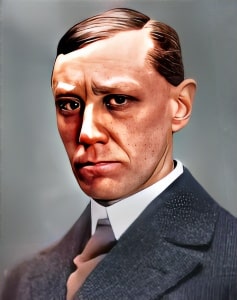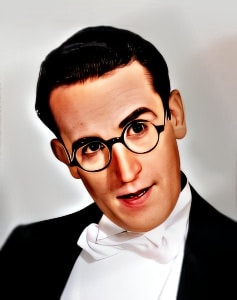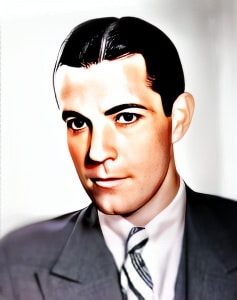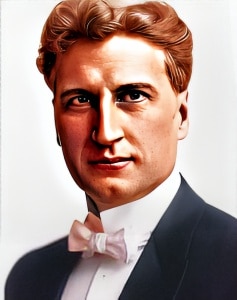 Max Schreck, born Max Grott on September 6, 1879, in Berlin, Germany, was a highly influential and enigmatic figure in the history of cinema.
Max Schreck, born Max Grott on September 6, 1879, in Berlin, Germany, was a highly influential and enigmatic figure in the history of cinema.
He is best known for his iconic portrayal of Count Orlok, the vampire in the classic 1922 silent horror film “ Nosferatu.” Schreck’s performance in “ Nosferatu” is considered one of the most chilling and enduring depictions of a vampire in film history.
Schreck’s early life and career were shrouded in mystery, and much about his background remains uncertain. He began his acting career in the early 20th century, performing in German theaters and making a name for himself as a character actor on stage. While his stage work was well-regarded, it was his role as Count Orlok in “ Nosferatu” that would cement his place in cinematic history.
“ Nosferatu,” directed by F.W. Murnau, is an unauthorized adaptation of Bram Stoker’s “Dracula.” Due to copyright issues, the filmmakers had to alter character names and some plot elements, but the essence of Stoker’s story remained intact. Schreck’s portrayal of Count Orlok is a masterclass in silent film acting, characterized by its eerie and otherworldly quality. His tall, emaciated figure, elongated fingers, and rat-like teeth created a chilling and unforgettable vampire character.
The film’s expressionistic style, marked by its use of shadows and distorted sets, added to the overall atmosphere of dread and suspense. Schreck’s performance as the vampire was both terrifying and mesmerizing, as he brought to life a character who would haunt the nightmares of audiences for generations.
Despite the film’s impact and Schreck’s iconic performance, “ Nosferatu” faced legal challenges from Stoker’s estate, and efforts were made to destroy all copies of the film. Fortunately, some prints survived, allowing the film to become a cult classic and a cornerstone of early horror cinema.
Following “ Nosferatu,” Max Schreck continued to work in German cinema, appearing in various films throughout the 1920s and early 1930s. His distinctive appearance and ability to portray unusual and menacing characters made him a sought-after character actor. He often played roles in horror and fantasy films, capitalizing on the notoriety he gained from “ Nosferatu.”
Schreck’s career was, however, affected by the rise of sound in cinema, and he appeared in fewer films in the sound era. His unique voice and style of acting, which had been so effective in silent film, did not translate as well to the new medium. Nevertheless, his legacy was firmly established, and he continued to be celebrated for his iconic portrayal of Count Orlok.
Max Schreck’s personal life remained relatively private, and he was known to be a reserved and somewhat mysterious individual. He lived in Berlin and continued to act in theater and film until his death on February 20, 1936.
In the decades following his passing, Max Schreck’s contribution to the world of cinema gained increasing recognition and appreciation. He is now celebrated as one of the early pioneers of horror cinema and a timeless figure in the genre. His portrayal of Count Orlok remains a benchmark for the portrayal of vampires in film, and his influence can be seen in countless vampire films and horror movies that followed.
Max Schreck’s enduring legacy in the world of cinema is a testament to the power of silent film acting and his ability to create a character that continues to captivate and terrify audiences to this day.
Loading live eBay listings...




